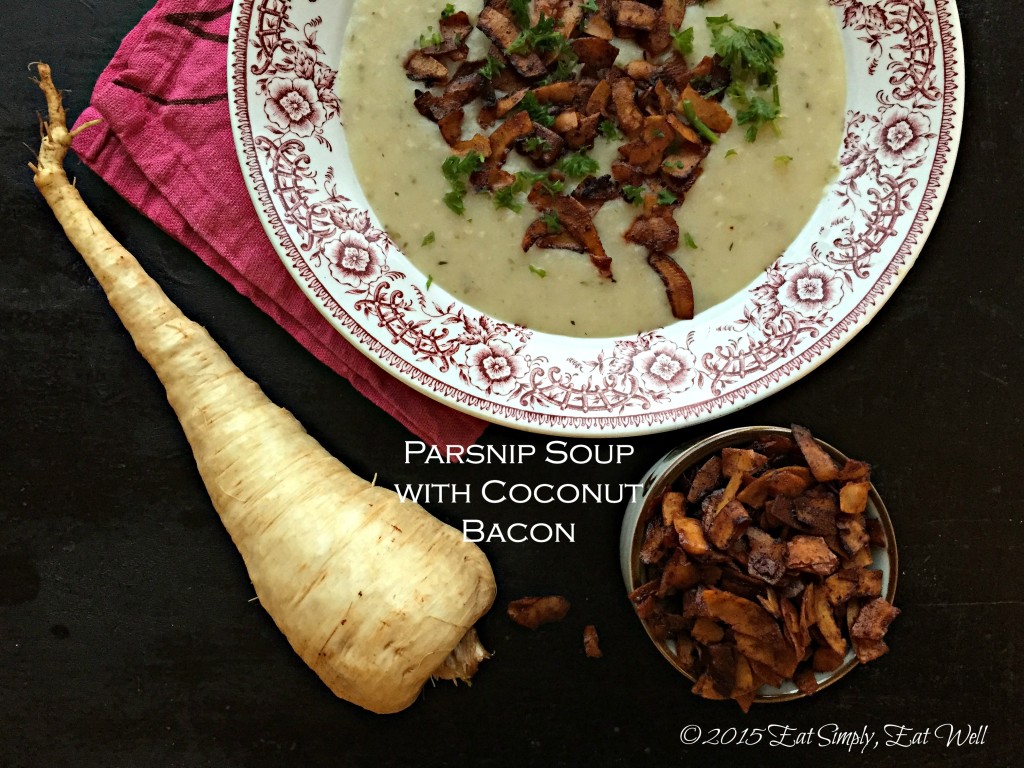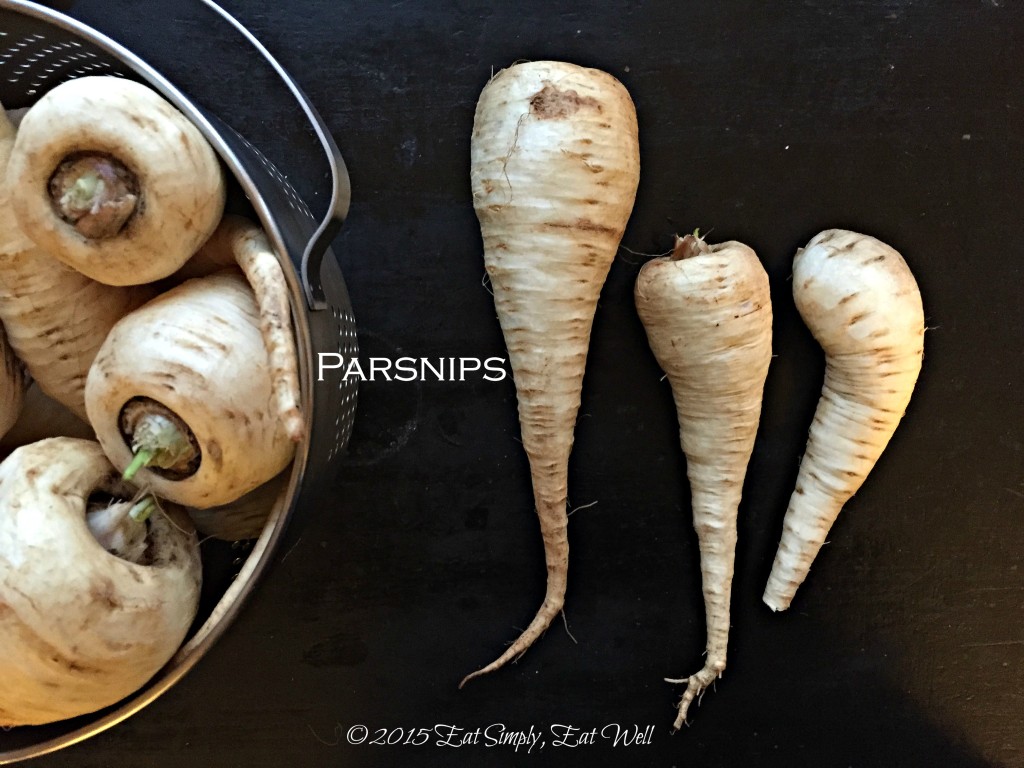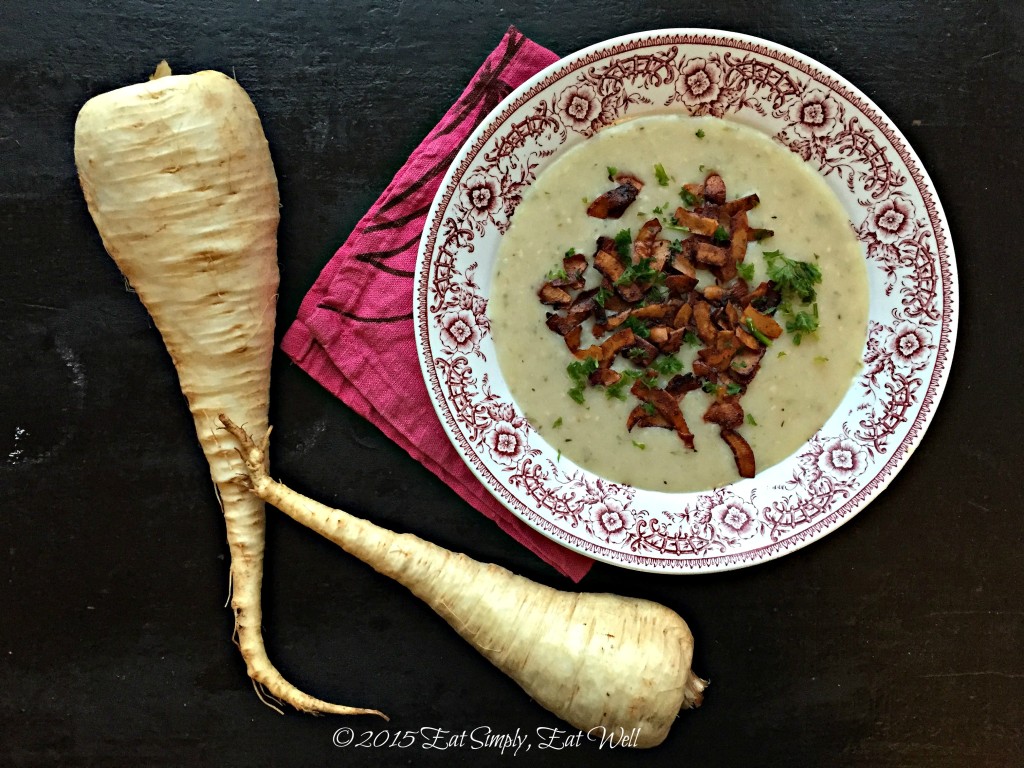I finally harvested the final crop from my garden: a load of giant, gorgeous, sweet, white parsnips. I’d read that parsnips increase in sweetness if they stay in the ground until after the first frost – which is when the starches turn to sugar, so I opted to let them hang out in the dirt long after I’d cleared out everything else. This was the first year I’d planted parsnips, so I wasn’t sure what to expect – half afraid that their 5 months in the ground would yield only a withered and disappointing harvest, the result of a less-than stellar summer.
Not to worry: these parsnips are beautiful!
Parsnip are an old and much forgotten vegetable, but I urge you: bring them back into your kitchen. When roasted with a little olive oil and salt, they caramelize into this soft-yet-crispy goodness that is completely addicting. When made into a soup, there is a smooth, earthy, and almost spicy element to them that is really hard to describe.
Parsnips are native to Europe and Central Asia, and were introduced to the US around the 17th century. They are related to carrots and parsley, and the flavor is slightly reminiscent of both, so those two flavors pair well with parsnips in any dish. Packed with natural sweetness, parsnips were used as a sweetener in cakes and baked goods before sugar cane became widely available.
They are good for you, too. They are full of vitamins and minerals in a nutritious package that helps to keep you healthy and prevent diseases: 100 grams of raw parsnips has:
- fiber – 20% RDA
- vitamin C – 28% RDA
- manganese – 28% RDA
- vitamin K – 28% RDA
- folate – 17% RDA
- potassium – 11% RDA
- phosphorus – 7% RDA
- vitamin E – 7% RDA
Sources: webmd.com; organicfacts.net
Right now parsnips are popping up in soups, purees, and roasted alongside the main courses in restaurants all over the Nordics and Baltics. When viewing the menu options for the upcoming Restaurant Week in Tallinn, Estonia, I saw parsnips everywhere. Join in on sampling the delicious flavor these vegetables provide, and take in the best of the season.
For this soup today, I opted to keep it vegan. So instead of adding cream to make it creamy, I used a special trick: oatmeal! It’s a little surprise that adds an extra dose of fiber and heart health to make the soup deeply satisfying. It’s the perfect thing for a cold, rainy, windy Autumn evening like this one.
Creamy Parsnip Soup with Coconut Bacon (gluten-free, dairy-free)
- 1 tablespoon coconut oil
- 1 small yellow onion, diced
- 650g / 1.5 pounds parsnips, washed, peeled and diced
- 2 garlic cloves, minced
- 3 cups water
- 1.5 cups cooked oatmeal, or 3/4 cup dry oatmeal +1.5 cups water, or 1.5 dl dry oatmeal + 3.5 dl water
- 1/2 teaspoon dried thyme
- 2 bay leaves
- 1 tablespoon chopped fresh or frozen parsley
- salt & pepper to taste
- Coconut Bacon for garnish
Heat coconut oil in a medium-sized pot over medium heat until it melts completely. Add the diced onion and cook 5-8 minutes until the onion is very soft. Add the parsnips and stir to coat; cook for 5 minutes. Add the garlic and cook for an additional minute.
Add the water, cooked oatmeal (or oats plus additional water if using), thyme, bay leaves and parsley. Bring the mixture to a boil, reduce to a simmer, and allow to cook until the parsnips are really tender – about 20 minutes. Remove the bay leaves and puree the soup until smooth using and immersion blender, or in batches using an upright blender or food processor.
Add salt and pepper to taste. Sprinkle each serving with Coconut Bacon for flavor and garnish.
Serves 4.



